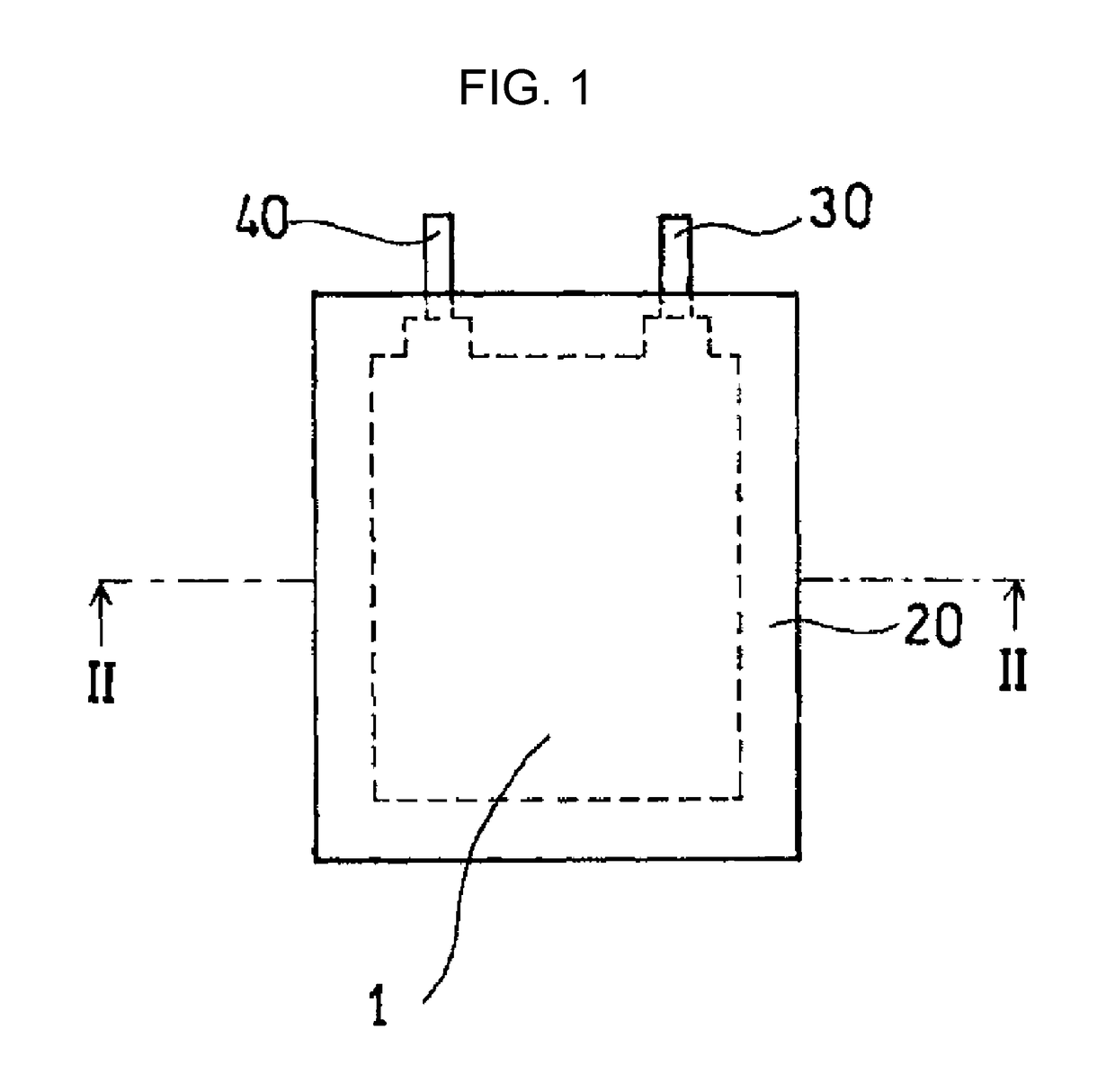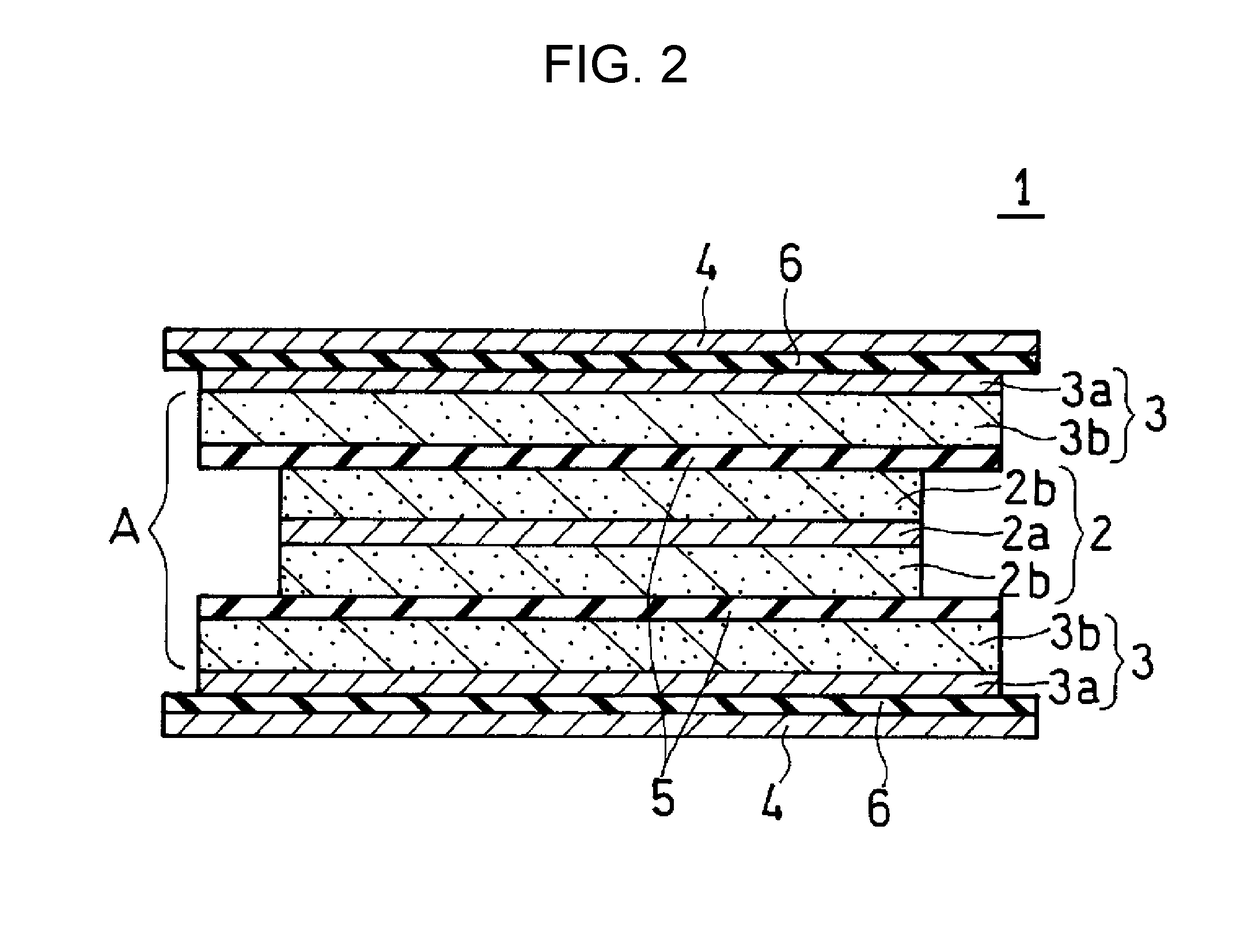Laminated battery
a technology of laminated batteries and dummy electrodes, applied in the direction of batteries, sustainable manufacturing/processing, cell components, etc., can solve the problems of easy breakage, heat generation and safety loss, short circuit between dummy electrodes and containers, etc., to reduce voltage, suppress displacement and/or contraction, and suppress expansion of a region of internal short circuit among active material layers
- Summary
- Abstract
- Description
- Claims
- Application Information
AI Technical Summary
Benefits of technology
Problems solved by technology
Method used
Image
Examples
example 1
[0131]A laminated lithium ion secondary battery including a stacked electrode group including four units A shown in FIG. 2 was produced by the following procedures.
(1) Production of Positive Electrode
[0132]LiCoO2 (positive electrode active material), acetylene black (conductive agent), and PVDF (binder) were mixed with each other in NMP, so that the mass ratio of LiCoO2: acetylene black : PVDF was 100:2:2, and then an appropriate amount of NMP was further added to the mixture so as to adjust the viscosity to obtain positive electrode mixture slurry.
[0133]The positive electrode mixture slurry was applied to both surfaces of an aluminum foil (positive electrode current collector, thickness: 15 μm). The resultant product was dried at 85° C. for 10 min, and compressed using a rolling press machine so as to form a positive electrode active material layer on both surfaces of the positive electrode current collector. The positive electrode current collector having the positive electrode ac...
examples 2 to 4
[0147]Batteries were produced in the same manner as in Example 1 except that an application amount of a vinylidene fluoride-hexafluoropropylene copolymer in the adhesion layers on both surfaces of the first separator and hot-pressing temperatures after pouring of liquid electrolyte were appropriately changed, and the adhesion state was changed. The batteries were evaluated according to Example 1.
example 5
[0148]A battery was produced in the same manner as in Example 1 except that a stacked film including a polyethylene microporous layer (thickness: 9 μm) and aramid microporous layers (each thickness: 3 μm) formed on both surfaces of the polyethylene microporous layer was used as the first separator, and the battery was evaluated.
PUM
| Property | Measurement | Unit |
|---|---|---|
| thickness | aaaaa | aaaaa |
| thickness | aaaaa | aaaaa |
| thickness | aaaaa | aaaaa |
Abstract
Description
Claims
Application Information
 Login to View More
Login to View More - R&D
- Intellectual Property
- Life Sciences
- Materials
- Tech Scout
- Unparalleled Data Quality
- Higher Quality Content
- 60% Fewer Hallucinations
Browse by: Latest US Patents, China's latest patents, Technical Efficacy Thesaurus, Application Domain, Technology Topic, Popular Technical Reports.
© 2025 PatSnap. All rights reserved.Legal|Privacy policy|Modern Slavery Act Transparency Statement|Sitemap|About US| Contact US: help@patsnap.com



